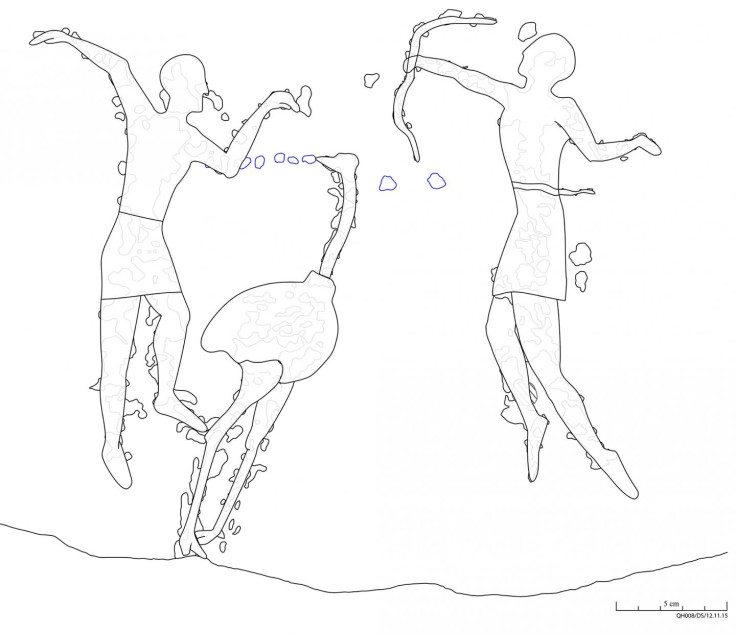Ancient Egypt: 6,000-year-old rock art discovered in necropolis shows shamanic rituals
The rock carvings are about 2,000 years older than the ancient cemetery where they were found.

A carving showing a hunter armed with a bow, a dancing figure with arms in the air and an African ostrich has been discovered in Egypt, dating from the Stone Age.
The carving was discovered during excavation of a large necropolis near Aswan in south-east Egypt. More than 80 mounds have been discovered in the necropolis, known as as Qubbet el-Hawa, or the hill of wind.
"The archer clearly shows hunting for the large flightless bird, while the man with raised arms can be identified as a hunt dancer," said lead researcher Ludwig Morenz, an Egyptologist at the University of Bonn, Germany, in a statement. "This social practice and the associated complex of ideas have barely been looked at in Egyptology."
The images are hard to discern but can be faintly made out in a series of many shallow dots etched into the surface of the rock. The scene is thought to depict a shamanic ritual, with the dancer appearing to wear a bird mask. It is reminiscent of some traditions of the present-day San people of southern Africa, the archaeologists say.
A similar engraving of female figures who were also dancing with raised arms, and one wearing a bird mask, were discovered several years ago at the Upper Egyptian Hierakonpolis near Cairo in the north of Egypt. Some original clay masks dating from the period were also found at the site. The findings at sites several hundred kilometres apart show extraordinary consistency, the researchers say.
"Style and iconography provide solid clues when dating these," said Morenz. North African rock art from the Stone Age is typically dated based on the stylistic effects used in a particular artistic tradition.

However, some of the engravings found at Qubbet el-Hawa predate the Egyptian style by a long way. The age of these carvings in particular far outdates the necropolis in which they were found. They are thought to be about 2,000 years older than Qubbet el-Hawa.
"It opens up a new archaeological dimension," Morenz said.
The site served the city of Elephantine between about 2200 to 400 BCE. Elephantine was an important centre for trade for Egyptians in Nubia.
© Copyright IBTimes 2024. All rights reserved.






